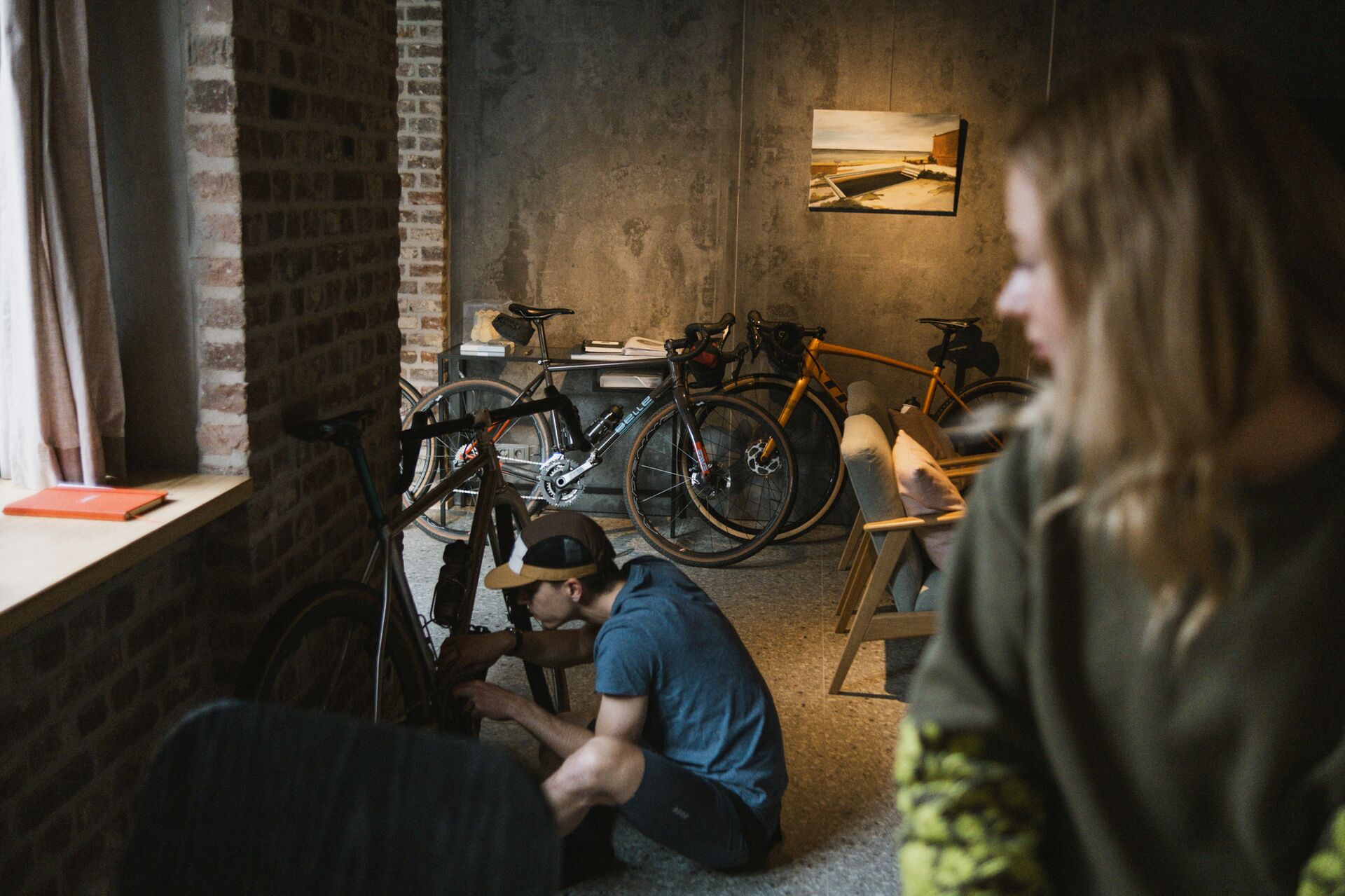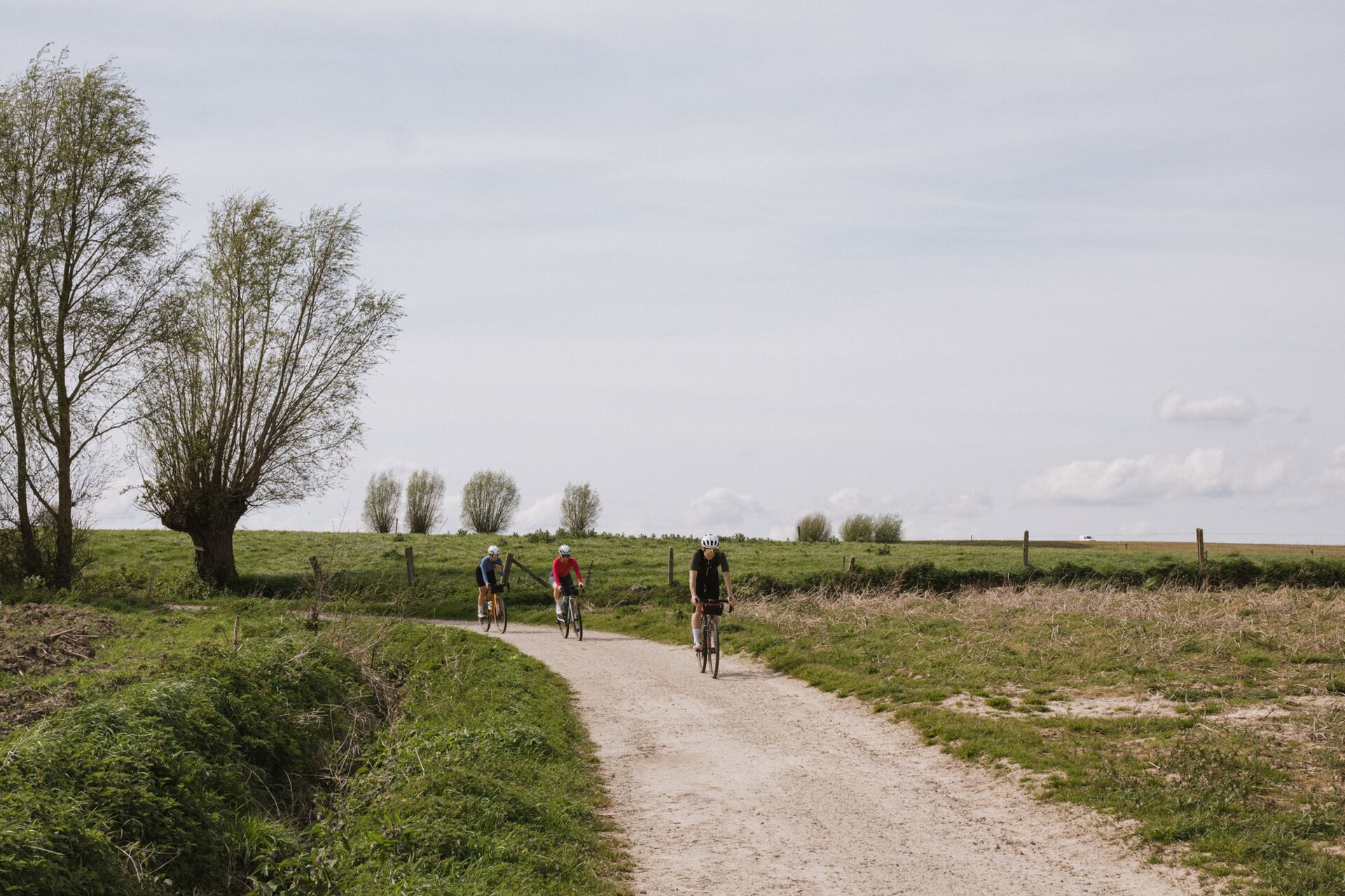The route step by step
Start
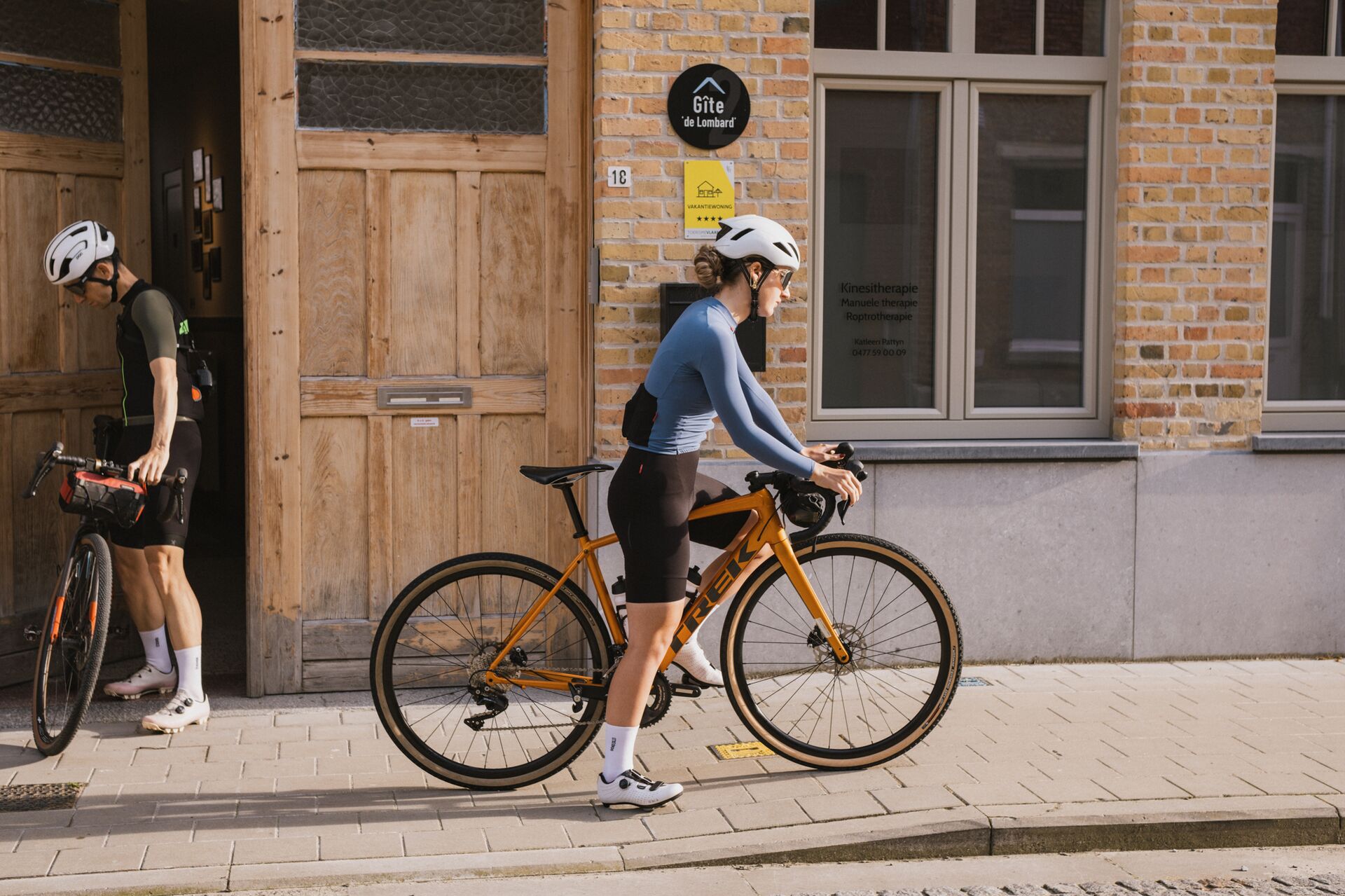
Ready to roll
We gathered in the beautiful city of Ypres. After a good night of sleep and a hearty breakfast, it was time to put on our kit and head out there.
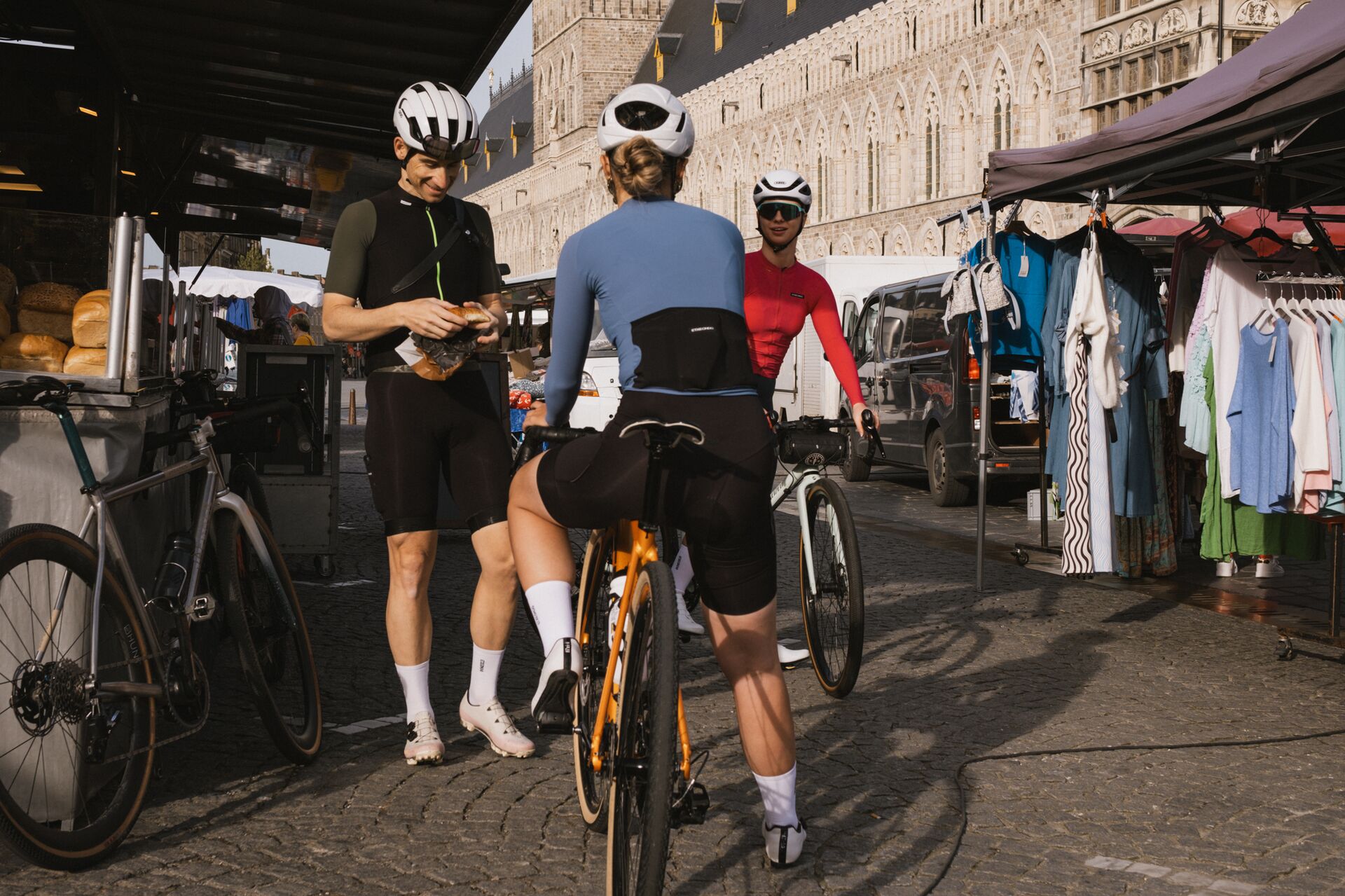
Or do we grab some more food at the market before we leave?
The start location was the Grote Markt, and knowing that on Saturday mornings there is a local market, we got a last dose of sugar before the start.
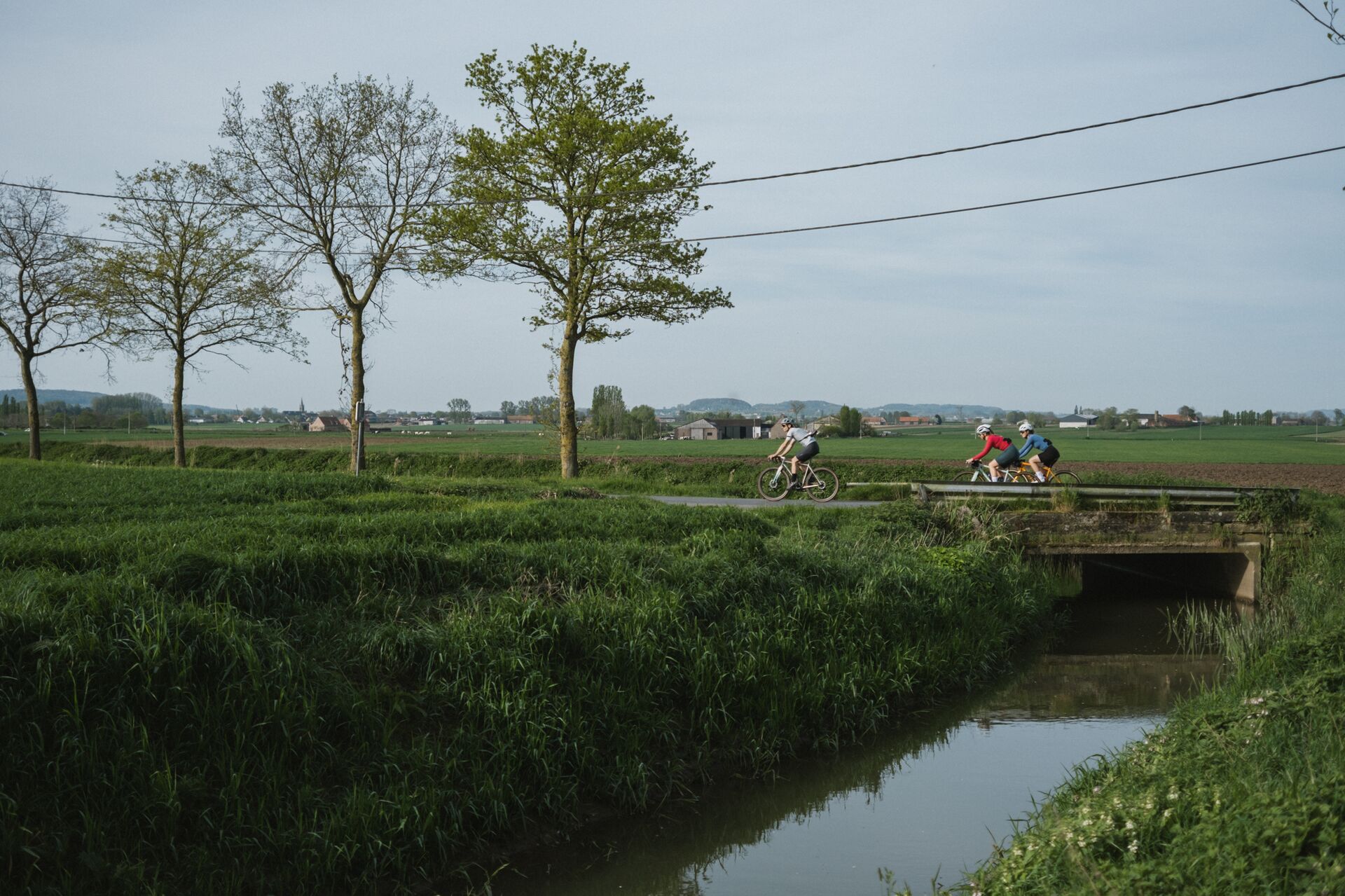
Leaving Ypres
We distanced ourselves from the city along a small path running parallel to the local canal. Immediately afterwards, we hit the first of the many open fields we would ride past during the day.
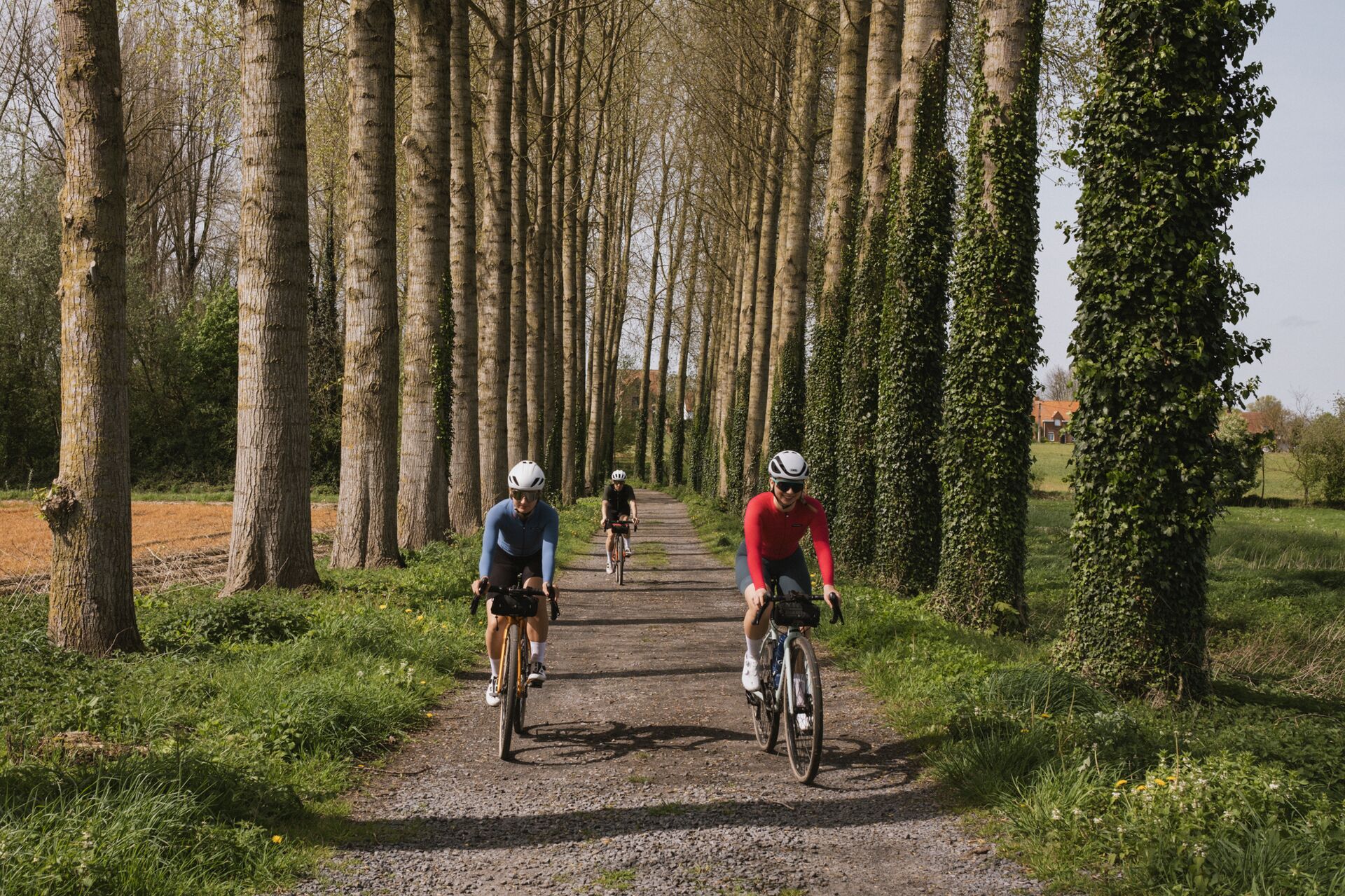
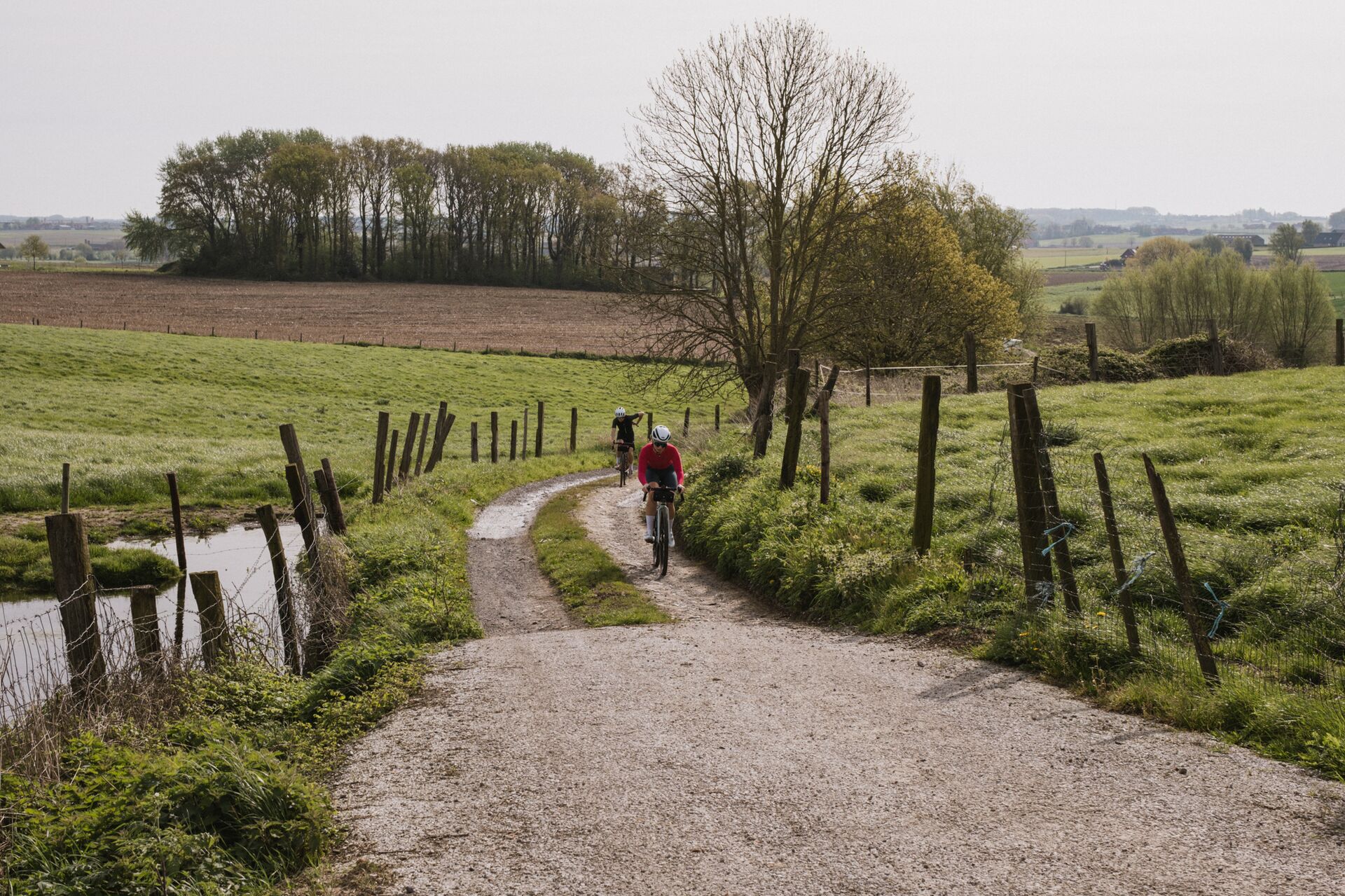
Towards beautiful Westouter
The route headed in western direction until we reached the border with France.
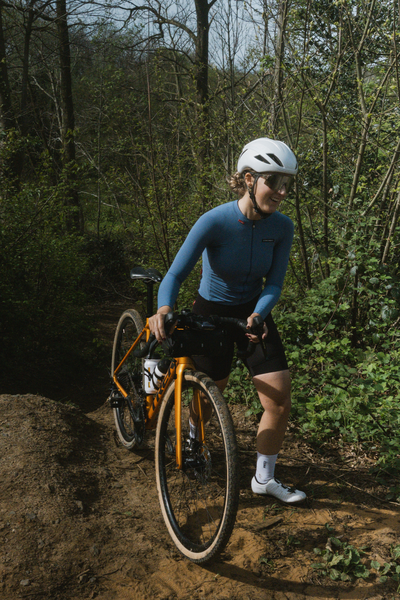
Our offroad alternative to Baneberg ain't exactly a walk in the park
From Westouter, we started a mellow climb that then turned into a technical trail to reach the top of the Banenberg. As we hit the tarmac again, we saw a dozen riders climbing the hill non-stop from the paved side, which is included in the Flandrien Challenge.
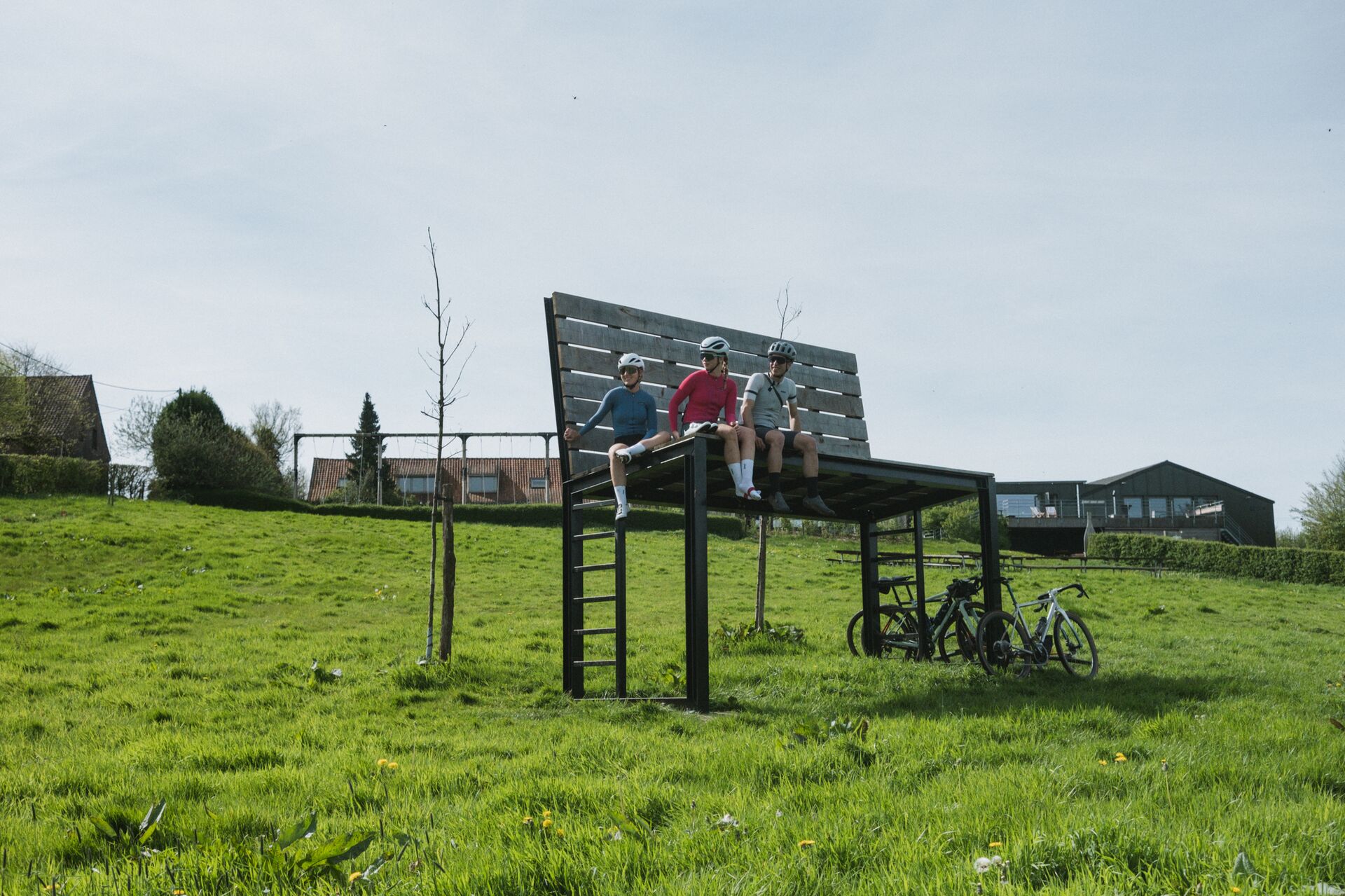
We feel so tiny in this landscape
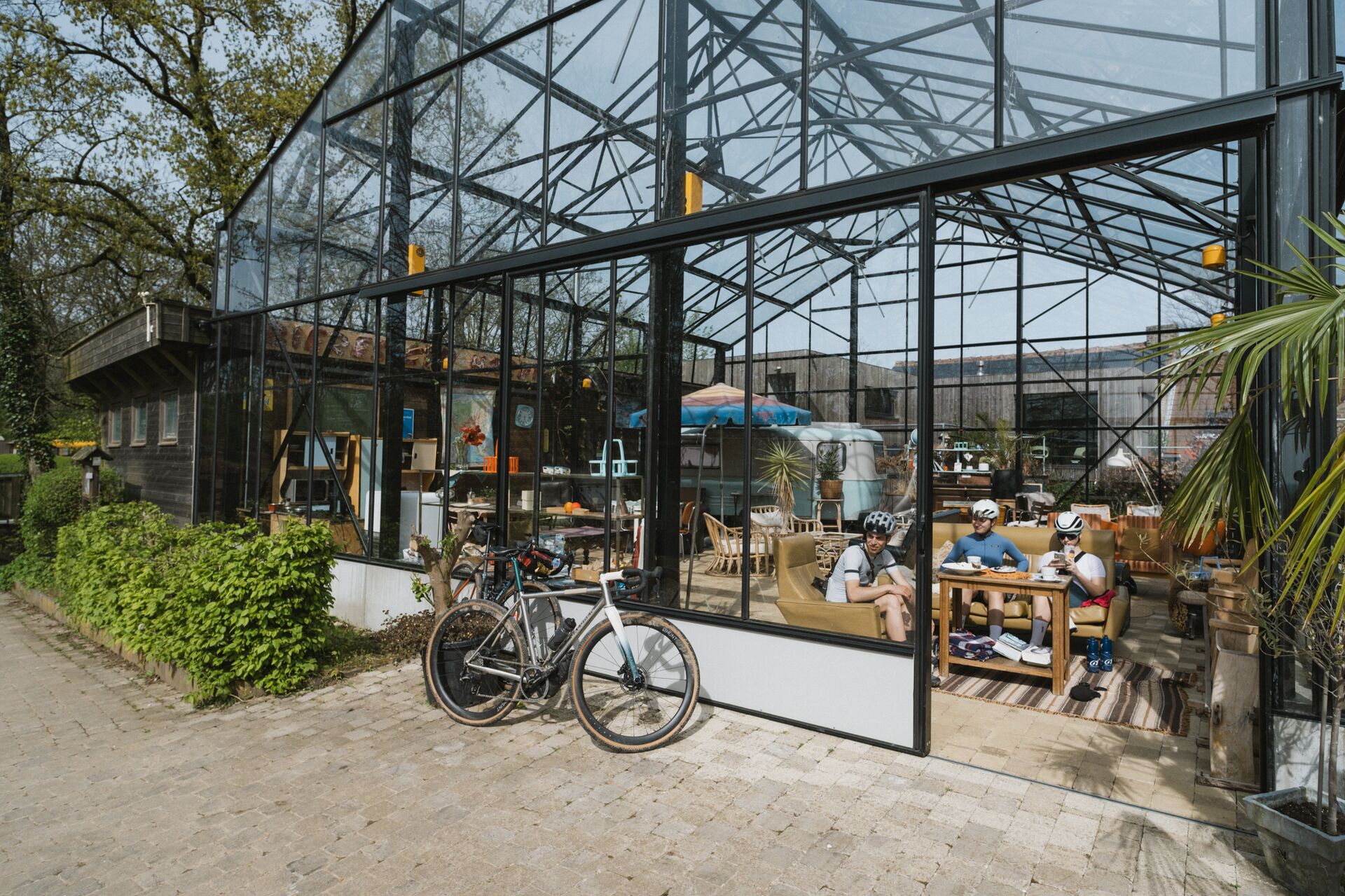
A coffee stop before we continue
A coffee is all we wanted, but we saw “Dame Blanche” on the menu and we had to try it. Vanilla ice cream, whipped cream and
melted chocolate: a boost for the morale.
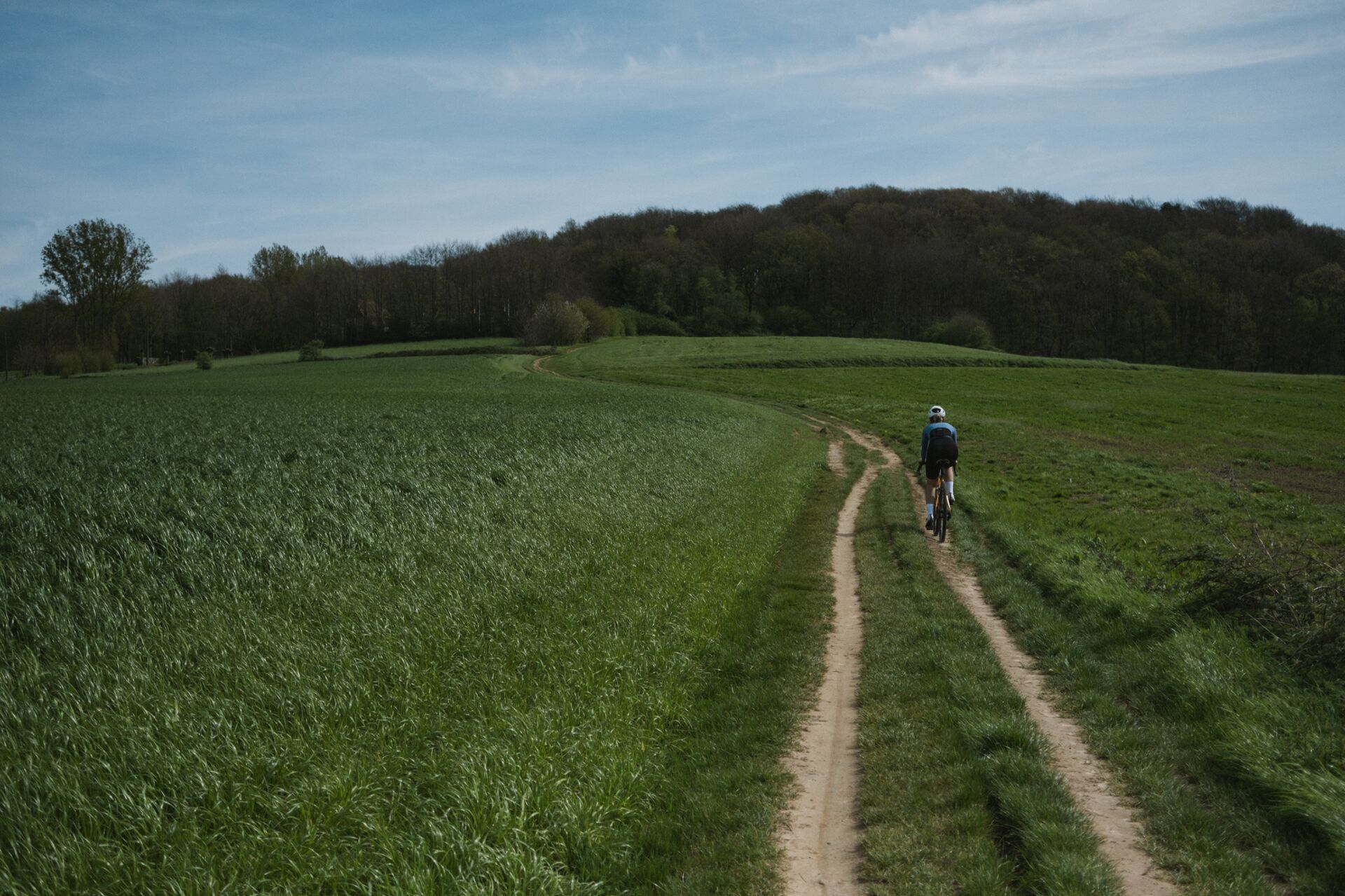
An offroad approach to Kemmelberg
The Kemmelberg can be approached from several roads and, in our case, unpaved paths. The first half was a natural path with moderate gradients and a dense forest in front of us. “Where does the famous cobbled part start?”, we wondered.
We hit the section covered by the trees and, after turning right next to the French Cemetery & Ossuary, the wall appeared in front of us. Only two hundred meters separated us from the top. But that ramp, with a gradient well over 15%, was a hard one. Even with a gravel gear ratio.
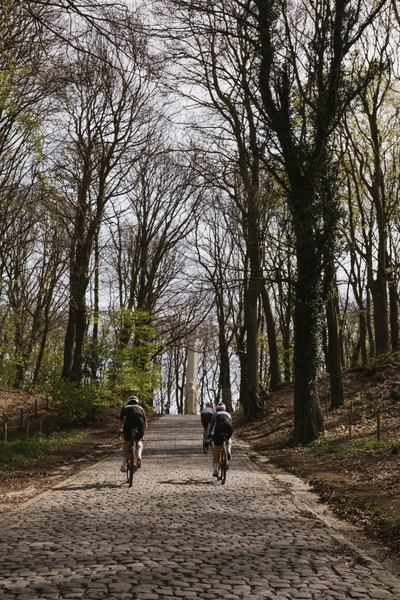
This is the steepest and longest side of the Kemmelberg, with a maximum gradient of over 20%. Gent-Wevelgem used to descend this way but a Jeremy Roy crash in 2002 underlined the danger of using steep, tree shaded cobbled descents in the finale of a big race.
Riding out of Kemmel, you turn right onto the stones which trick you into thinking the summit is just around the long left hand bend before kicking you in the teeth with the last 20% ramp before the summit at the Ossuaire built to honour the remains of some 5294 French troops killed in fighting over the possession of the hill, who's guns overlooked the entire Ypres Salient. Of these, only 57 were identified. It is the largest French military monument outside of France.
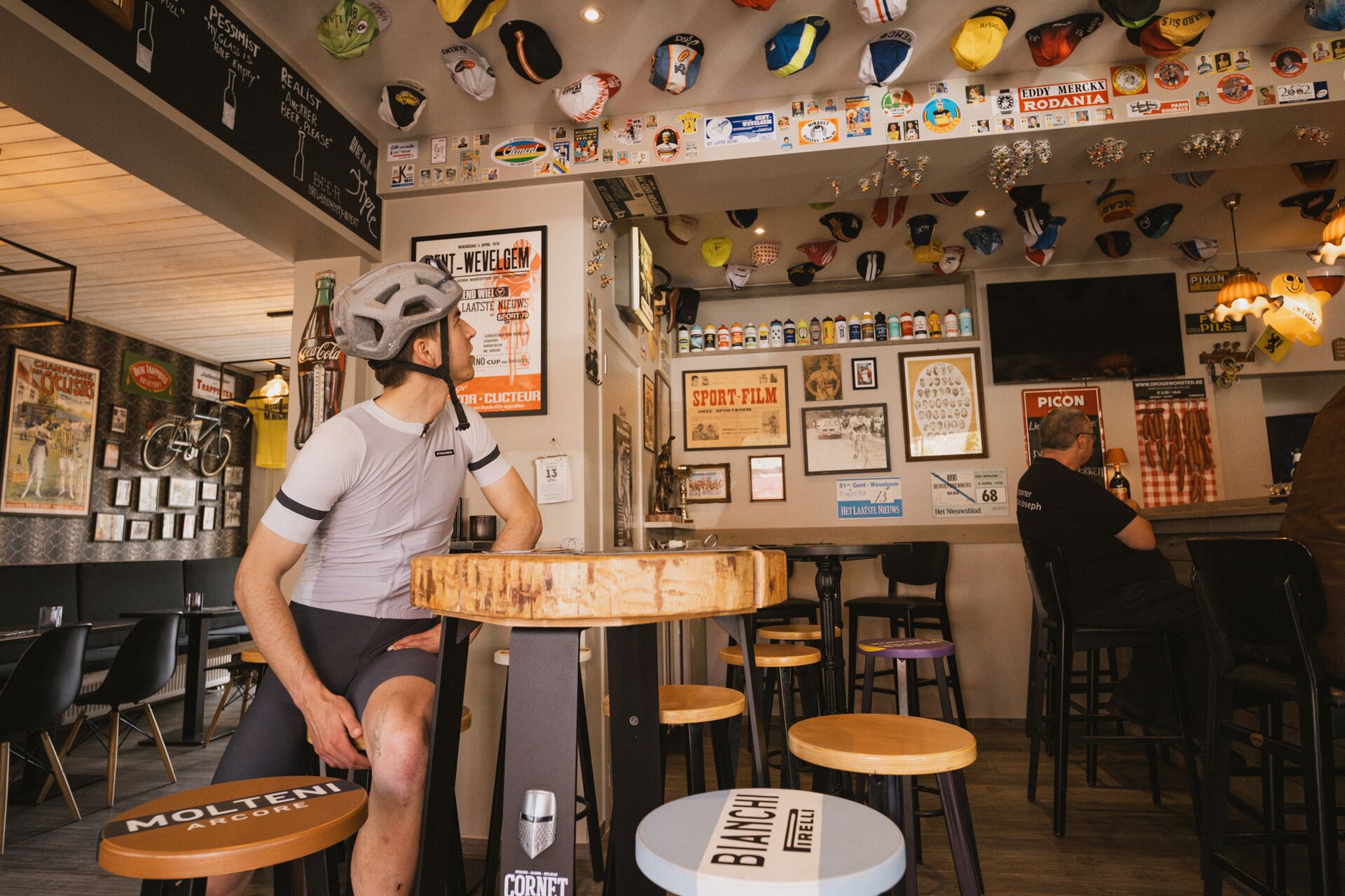
A great cycling themed bar at the foot of the Kemmelberg. Perfect for your pre-ride coffee or post-ride beer. Or maybe try the local speciality: Picon.
This bar is owned by former amateur cyclist Pieter and is home to the cycling club 'De Vlammers'. Inside you'll find an original jersey of former Belgian Champion, Herman Van Springel. And they show all the cycling races on television.
Definitely worth a stop!
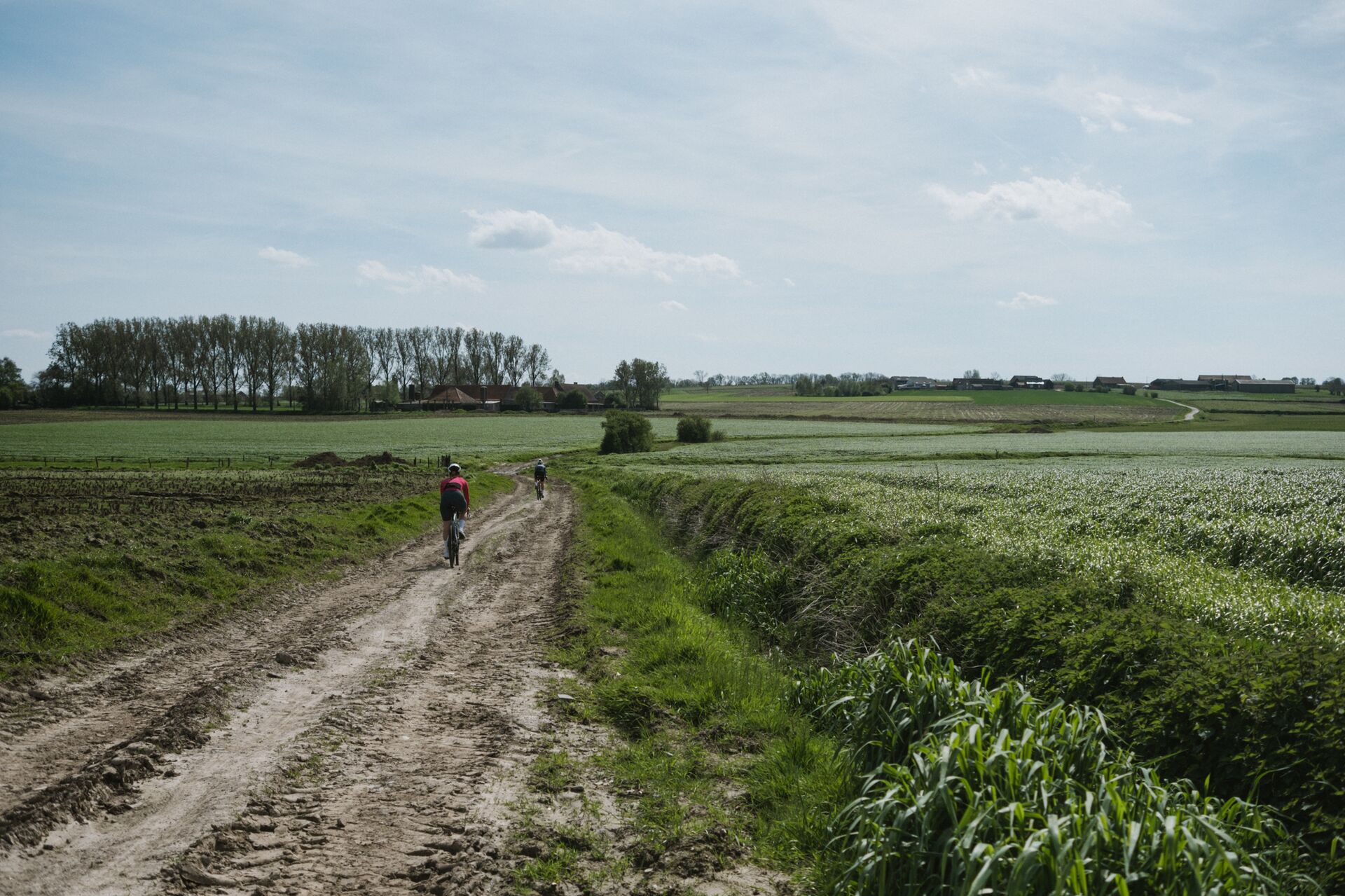
On our way to Plugstreets
Once we resumed our ride, we were more than halfway back to Ypres. The area we were riding at that moment was near one of the frontlines of the war. In particular, we were looking forward to riding the different Plugstreets featured in this route, as we were aware of their meaning and the history behind them.
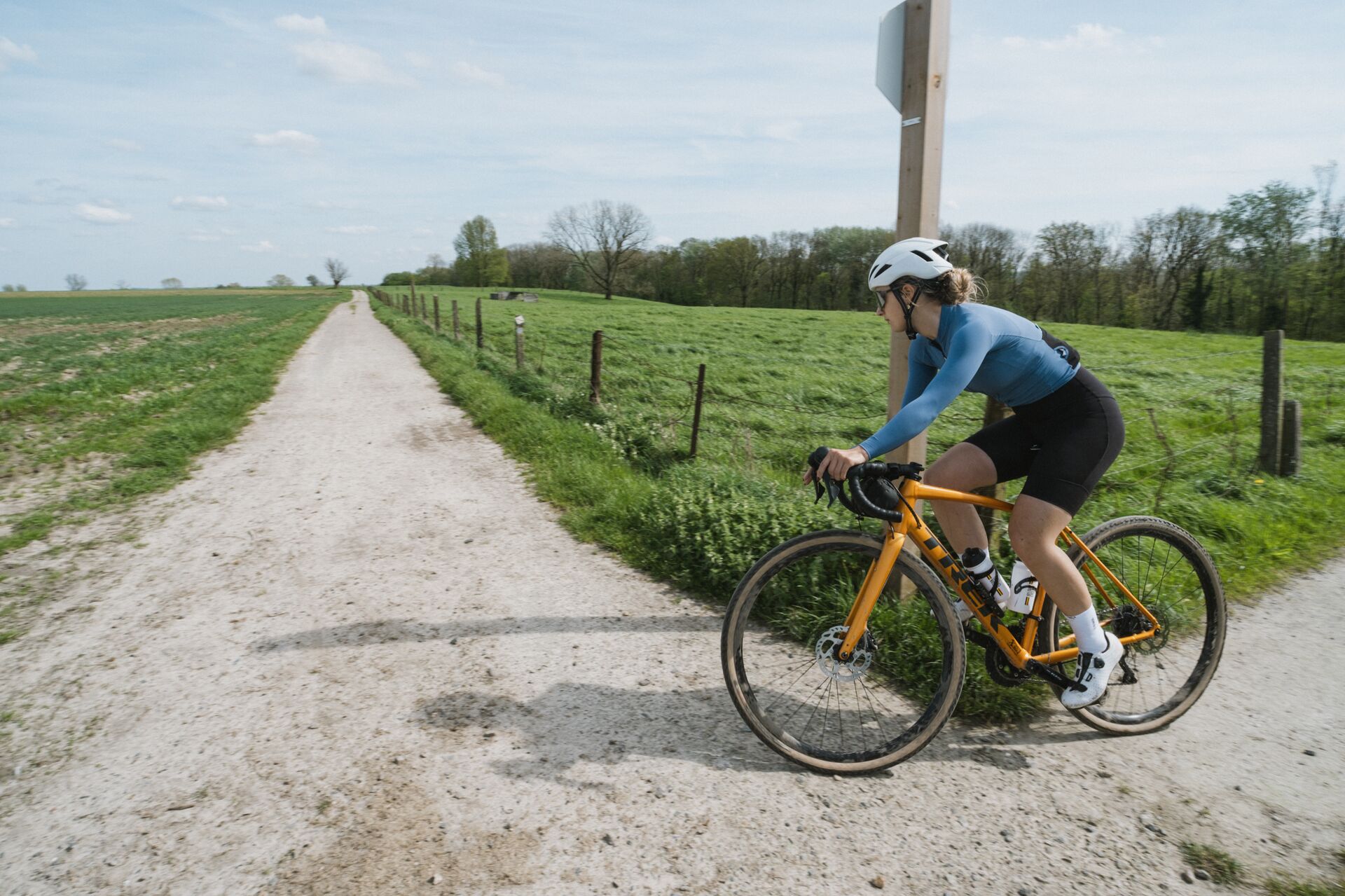
Plugstreets
These gravel paths are spread a couple of kilometers north of the small village of Ploegsteert. They were named this way because the British soldiers based in the area were unable to pronounce the name of the village.
There are three Plugstreets (Hill 63, Christmas Truce, The Catacombs), each of them with their own share of wartime history. We briefly stopped at the Christmas Truce memorial. According to history, on December 24th, 1914, the Allied forces and the Germans put their attacks on hold to play a football match in no-man’s land.
The plugstreets were included for the first time in the Gent-Wevelgem parcours in 2017. We did them in the opposite order compared to the 2024 edition of the race.
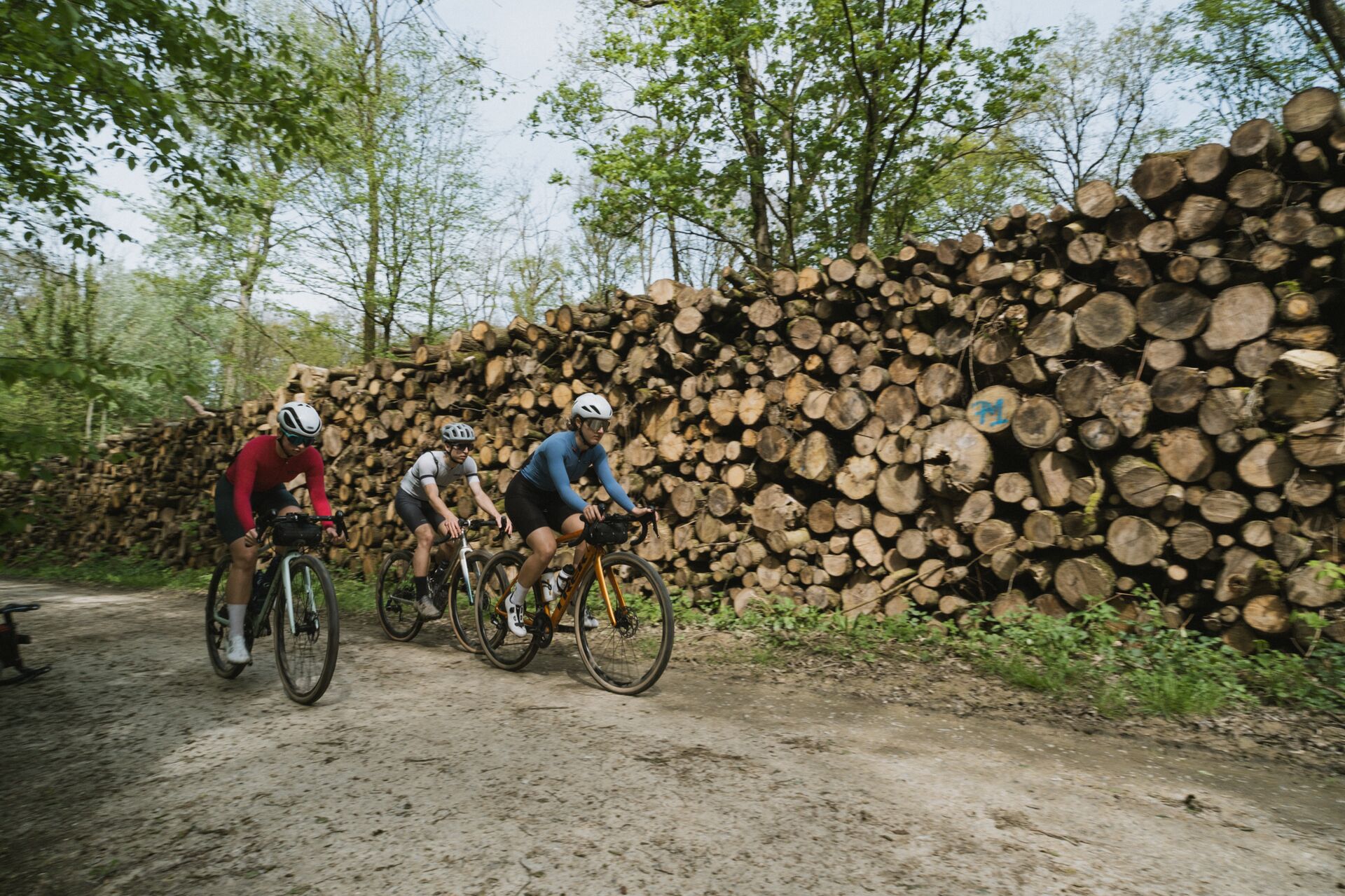
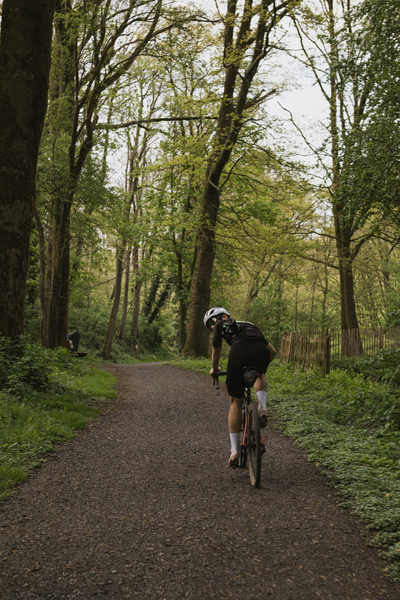
Palingbeek - don't look back now
As the sun kept shining hard, we appreciated taking shelter in the green 'De Palingbeek' domain. We entered the park along a cobbled road that we would follow for the next couple of kilometers. Once we reached the other side, we linked it with a couple of nice gravel paths.
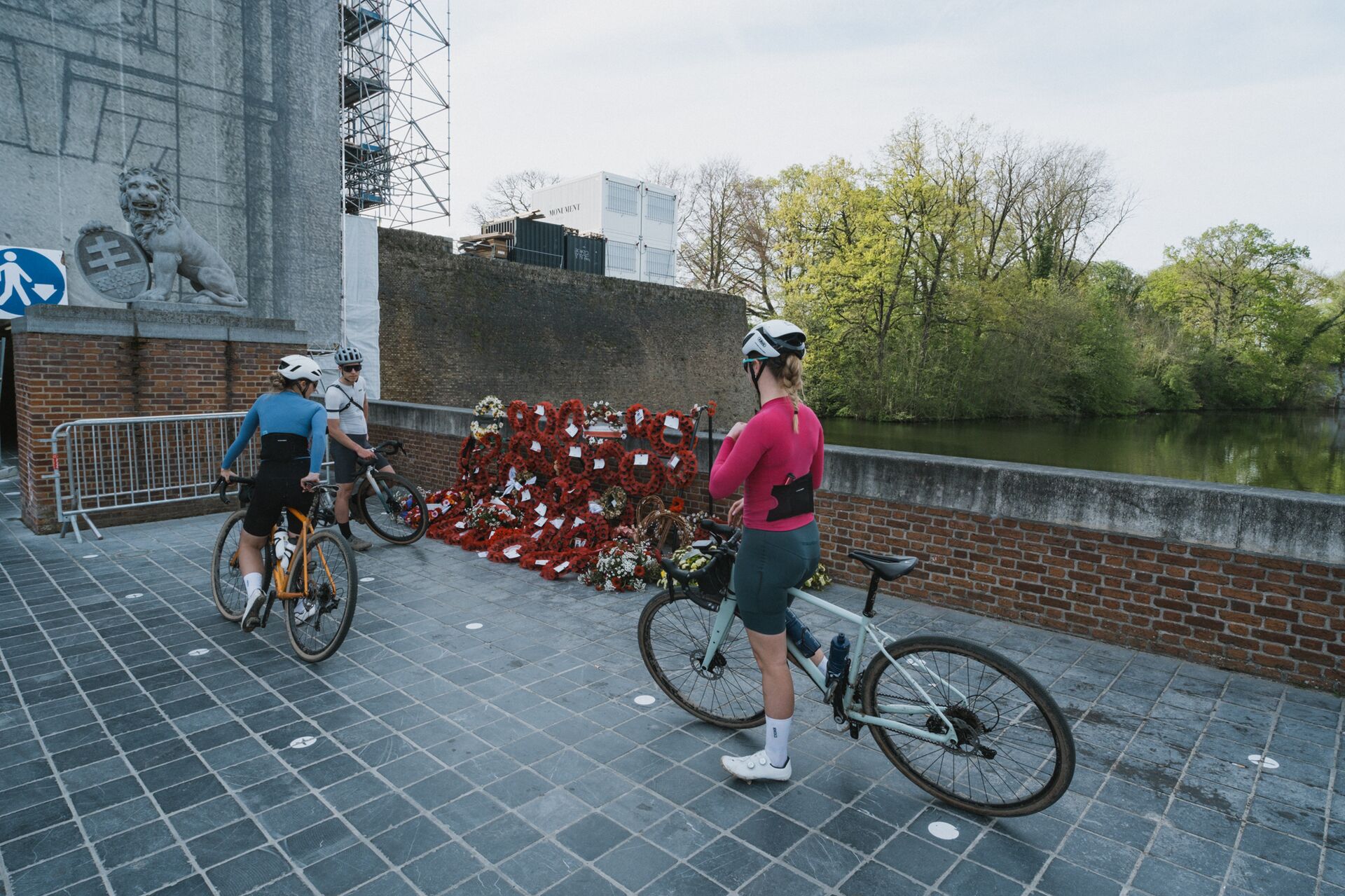
Back in Ypres
While the Mening Gate was under renovation, we could still sense the historical importance of that landmark, with the poppy seed flowers and messages laying on the ground next to it.
We didn’t start in Ghent, and we didn’t finish in Wevelgem, but this off-road version of the professional race contains the main highlights and spices it with some varied gravel paths, turning it into the go-to route for anyone interested in the history behind the race.
Finish
